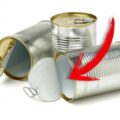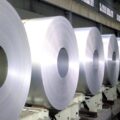Open or cold welds can be caused by several factors that affect weld quality in metal container manufacturing. Based on the information provided, some of the possible causes are:
- Excessive current: Too high a current can generate excessive heat and affect weld quality, leading to open or cold welds.
- Condition of the welding roller: If the roller is worn or poorly adjusted, it may not exert adequate pressure, resulting in a poor weld.
- Excessive track spacing: If the distance between the weld tracks is too great, there may not be sufficient overlap between them, resulting in a brittle or open joint.
- Solder on only one side of the copper wire: If the copper wire is not properly turned and only soldered on one side, it may cause a weak or incomplete joint.
- Asymmetrical welding pressure: Poor welding wire profiling can cause uneven pressure during the welding process, leading to cold or open welds.
- Lack of parallelism in the weld surfaces: If the inner and outer surfaces of the weld are not parallel, there may be incomplete fusion in one part and high extrusions in another, affecting the quality of the weld.
- Oxidation in the weld zone: The presence of rust can affect the adhesion of the weld material. The use of inert gas during welding can prevent oxidation and improve joint quality.
These are just some of the factors that can cause open or cold welds. It is important to perform a detailed quality control and adjust the parameters of the welding process to avoid these problems.












0 Comments